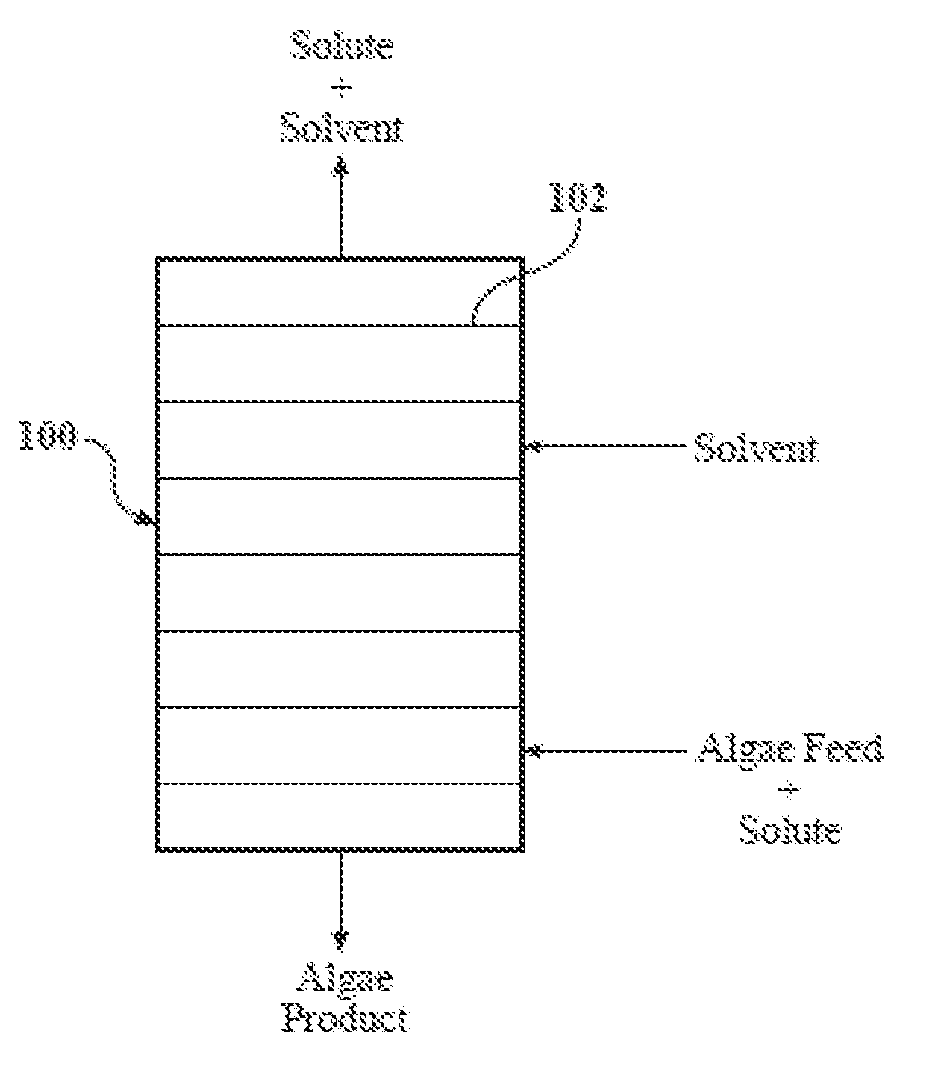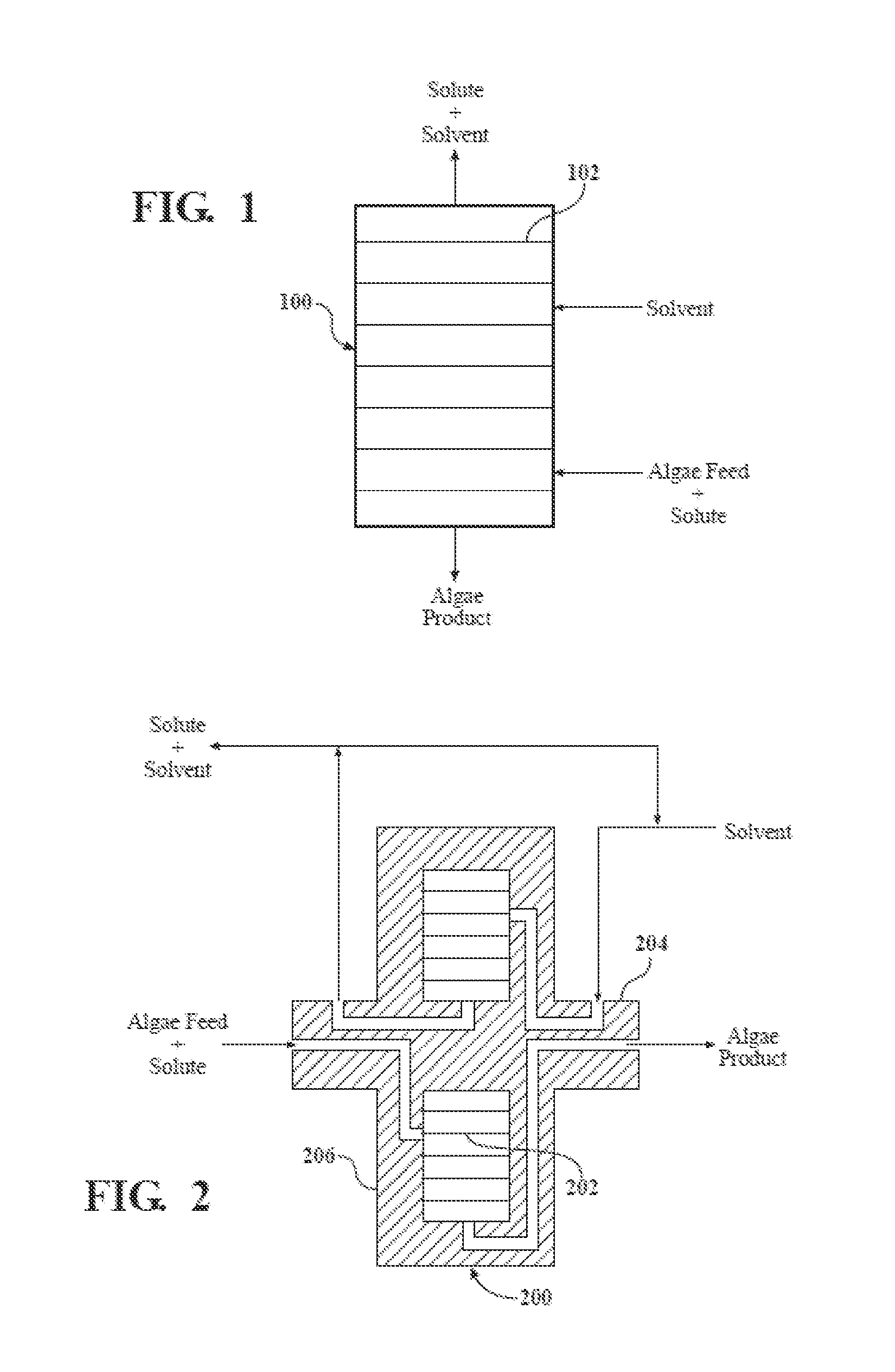Process for separating solute material from an algal cell feed sream
- Summary
- Abstract
- Description
- Claims
- Application Information
AI Technical Summary
Benefits of technology
Problems solved by technology
Method used
Image
Examples
examples
Examples According to FIGS. 1 and 2
[0095]According to the embodiment of FIG. 1, an algal cell feed stream is injected into one end of a mixer-settler vessel 100, with a solvent stream being injected into another end of the mixer-settler vessel. The streams are at desired densities that allow the streams to move in countercurrent direction to one another. In FIG. 1, the solvent moves in a downward direction, while the algal cell feed stream moves in an upward direction. As the streams move in their respective directions, they are mixed by way of sieve plates 102, with the solute material in the algal cell feed stream being extracted / separated and recovered at the upper portion of the vessel. The algae product can be recovered at the lower end of the vessel. The solute material is less dense and can move upward, while the algal stream can move downward.
[0096]The embodiment of FIG. 2 uses a Podbielniak-type (POD) extractor 200 as the separator or extractor vessel. In this embodiment, s...
PUM
| Property | Measurement | Unit |
|---|---|---|
| Temperature | aaaaa | aaaaa |
| Temperature | aaaaa | aaaaa |
| Fraction | aaaaa | aaaaa |
Abstract
Description
Claims
Application Information
 Login to View More
Login to View More - R&D
- Intellectual Property
- Life Sciences
- Materials
- Tech Scout
- Unparalleled Data Quality
- Higher Quality Content
- 60% Fewer Hallucinations
Browse by: Latest US Patents, China's latest patents, Technical Efficacy Thesaurus, Application Domain, Technology Topic, Popular Technical Reports.
© 2025 PatSnap. All rights reserved.Legal|Privacy policy|Modern Slavery Act Transparency Statement|Sitemap|About US| Contact US: help@patsnap.com


